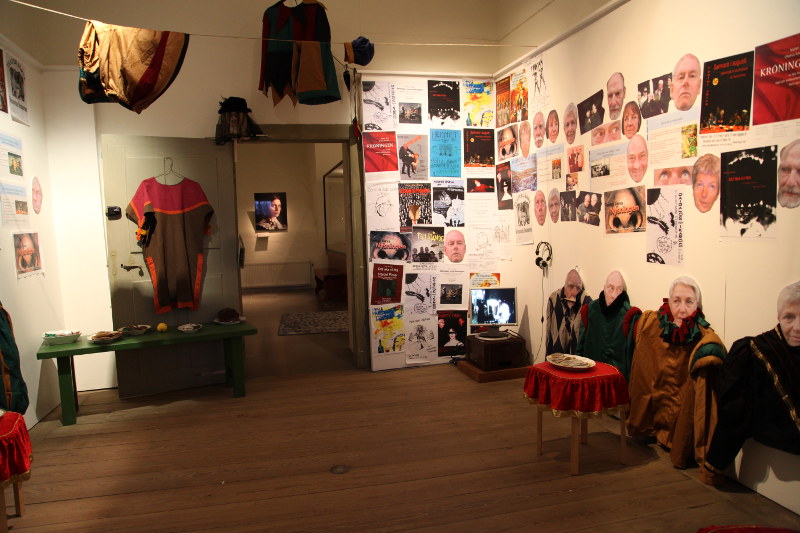Below are snippets of medieval Stockholm history taken from a rather fantastic display the Stadsmuseum. Throughout the museum, you’ll find various photos on the wall with a plaque underneath that gives a recorded event about one person from Stockholm’s medieval history. The photo is supposed to depict the face of that person. (Photos are taken by Lena Erlandsson and Johan Stigholt)
I love reading these snippets, rather than someone else’s interpretation of what happened (because history isn’t history at all, it’s individual perspective). And, it appears to me as though these little snippets come from either newspaper clippings or legal records (often the legal records were published in local papers).
One of the things I’ve learned about travelling the world is that invention, industry, architecture, society and political history roughly follow the same themes regardless of where you are. It’s the individuals, their stories, and their relationships with each other that make places different.
These snippets are also extra special because of the mere fact that they exist. They only exist because the people involved managed to get into trouble and leave behind a public record. Without this record, we would know nothing about them or their lives.
Anna Erichsdatter, 1629
Anna sold her property at Brunkeberg for 480 daler, a barrel of flour, two lispund (c. 8 1/2 kg) of pork and some firewood. She probably had good reason to be pleased.
Elisabett Mansdatter, 1647
Elisabett was a child from the orphanage who on 24 March 1647, together with sixteen other children, managed to enter the throne room of the royal castle to complain to Queen Kristina. It was March and the orphanage children had yet to receive any money for food. They had been forced to beg on Norrmalm and pawn their clothes.
Elsa Erichsdotter, 1635
Elsa’s father, Berendt Erichson beat her to death. He had stuck her with a log and was thrown in jail. We do not know what became of him.
Israel’s Anna, 1618
Israel’s Anna went to court claiming the accountant Peder Nilsson had promised to help her husband. Anna was drunk and when the court refused to listen she made a scene, screaming language that was unfit to be written down. She was removed from the court but later returned after drinking even more. Anna was thrown out again, receiving several bruises.
Johan Olofsson, 1657
Johan, who was blind received alms of 20 ore a week from the Klara Church.
Kirstinn Larsdatter, 1629
Kirstinn confessed in court to having stolen a gold ring, a kirtle, a gown and a bed curtain. Because all the items had been returned to their owners, Kirstinn receive a mild sentence: she was banished from the town. The death sentence awaited her if she returned.
Queen Kristina, 1626-1689
Kristina was just 6 years old when she became queen of Sweden but governed only from the age of 18. She was interested in politics, art and science, and invited many foreign learned men to Stockholm. In 1654, aged 28, Queen Kristina abdicated, in other words, she gave up the right to be queen. She left Sweden and later became a Catholic. Kristina eventually settled in Rome. She travelled throughout Europe, and once returned to Sweden, but died in Rome where she lies buried in St. Peter’s.
Lisbetha Olsdotter or Matts Ersson, 1678
Lisbetha, a woman from Uppland, left her husband and children and moved to Stockholm. There she began to dress as a man, calling herself Matts Ersson. Later, she left town and became a soldier, calling herself Mats Persson. Soldier Mats married a maid called Kjerstin Ersdotter. When she realized she had married a woman, Kjerstin reported Mats to the authorities. Lisbetha/Mats was sentenced to be beheaded.
Peer Hindrichsson, gravedigger, 1635
Peer build a fence along the edge of Klara churchyard to stop pigs coming in. The owner of the neighbouring property, sawyer Lars Nilsson, disliked the fence because it blocked his short cut. He, therefore, pulled down the fence several times. He once there stones at Peer, causing bleeding cuts to his legs.
Joran, brewer, 1640s
When the streets of Norrmalm were regulated, Johan’s house at Malmtorget was demolished. He received either a new house or a plot of land near Hotoget.
Walborg Hieronymusdotter, 1635
Walborg sheltered Brijta, who had run away from her abusive husband Mans Jonsson. Mans accused Walborg of kidnapping but the court found in Waborg’s favor and sentenced Mans to pay a fine.
